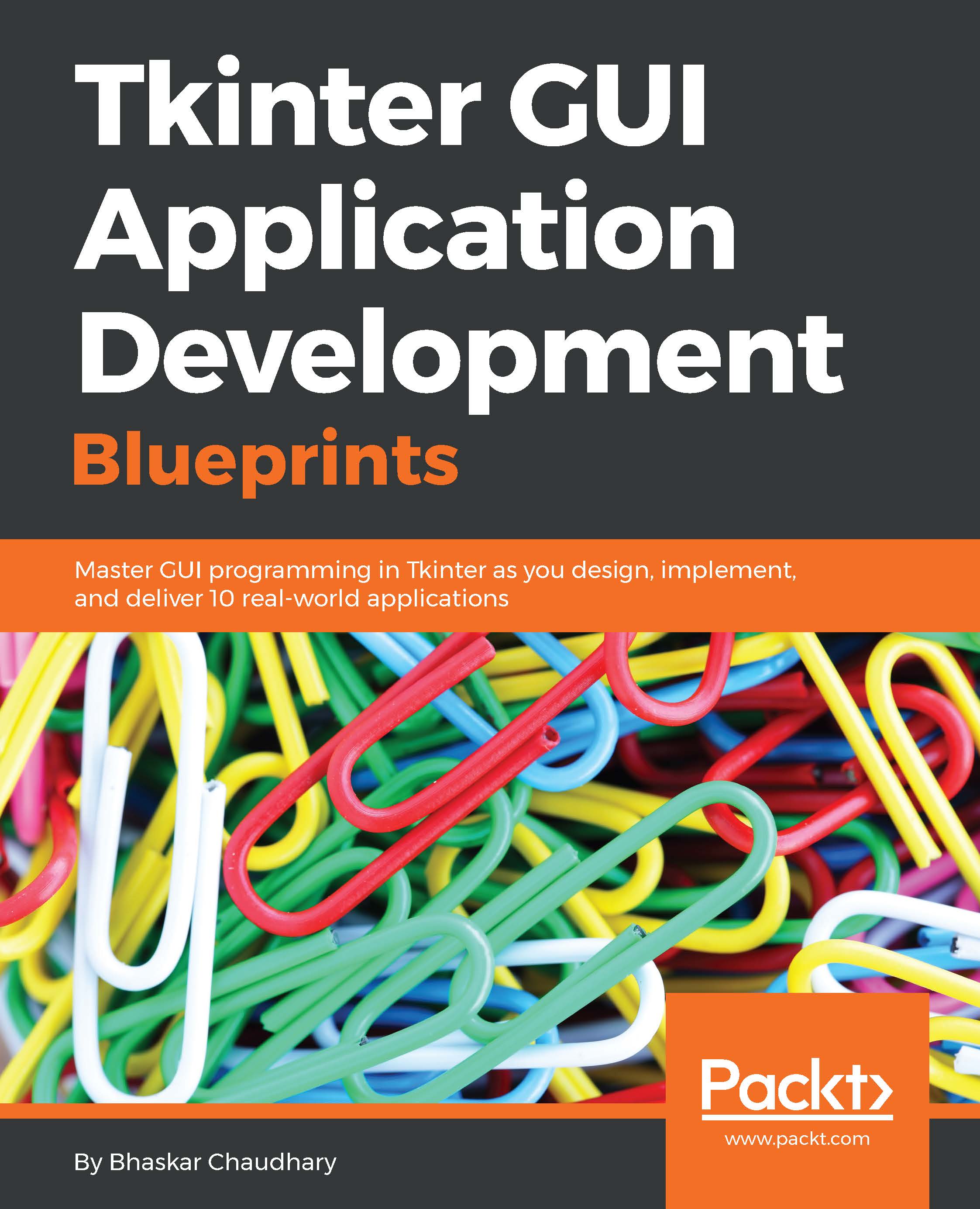-
Book Overview & Buying

-
Table Of Contents

Tkinter GUI Application Development Blueprints
By :

Tkinter GUI Application Development Blueprints
By:
Overview of this book
Tkinter is the built-in GUI package that comes with standard
Python distributions. It is a cross-platform package, which
means you build once and deploy everywhere. It is simple
to use and intuitive in nature, making it suitable for
programmers and non-programmers alike.
This book will help you master the art of GUI programming.
It delivers the bigger picture of GUI programming by building
real-world, productive, and fun applications such as a text
editor, drum machine, game of chess, media player, drawing
application, chat application, screen saver, port scanner,
and many more. In every project, you will build on the skills
acquired in the previous project and gain more expertise.
You will learn to write multithreaded programs, network
programs, database driven programs and more. You will
also get to know the modern best practices involved in
writing GUI apps. With its rich source of sample code, you
can build upon the knowledge gained with this book and
use it in your own projects in the discipline of your choice.
Table of Contents (10 chapters)
Preface
 Free Chapter
Free Chapter
1. Meet Tkinter
2. Making a Text Editor
3. Programmable Drum Machine
4. A Game of Chess
5. Building an Audio Player
6. Paint Application
7. Multiple Fun Projects
8. Miscellaneous Tips
Index

